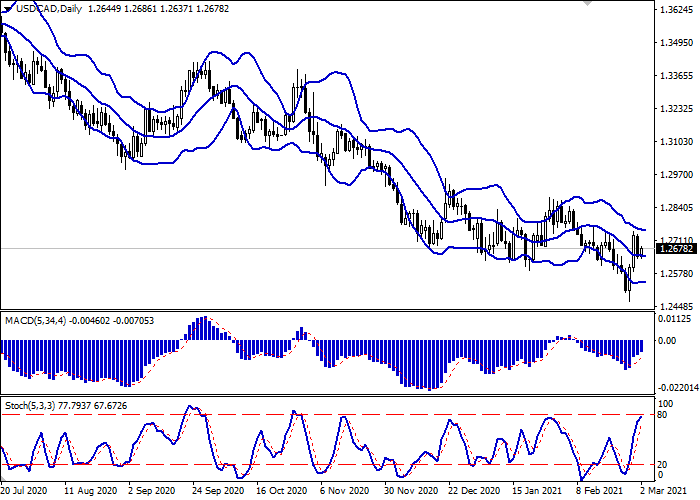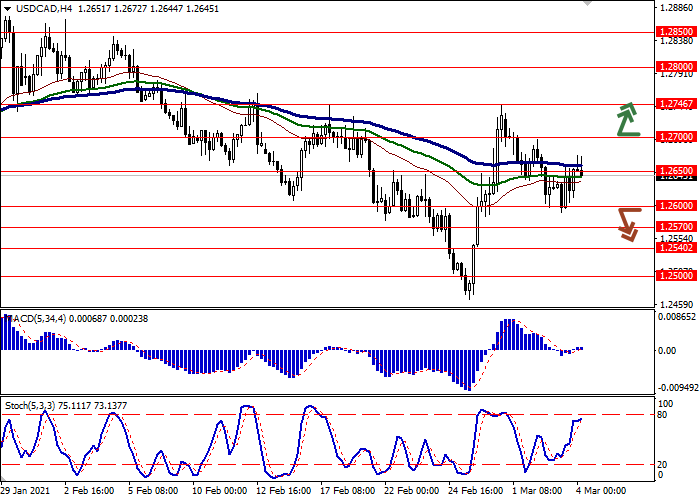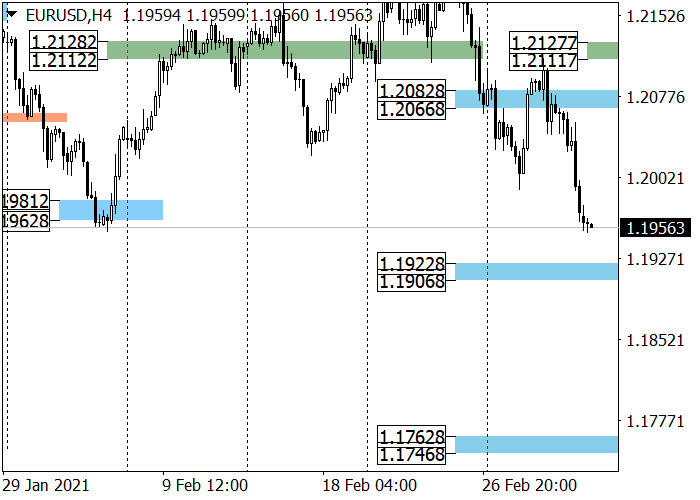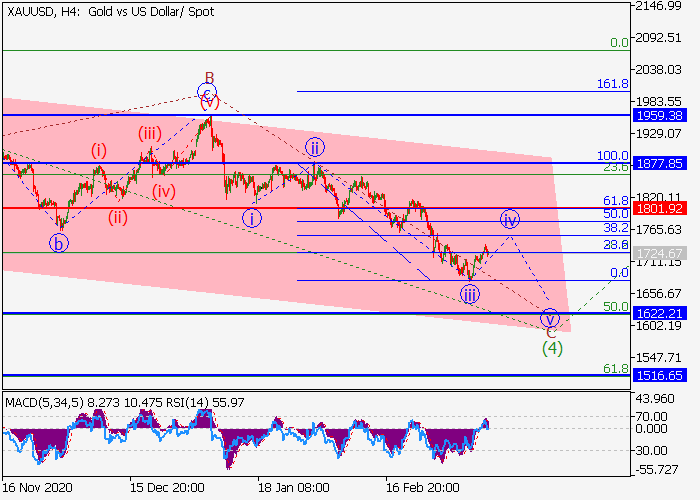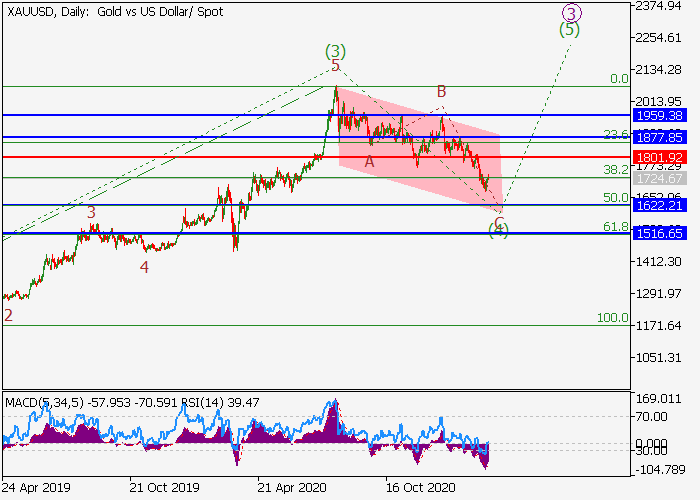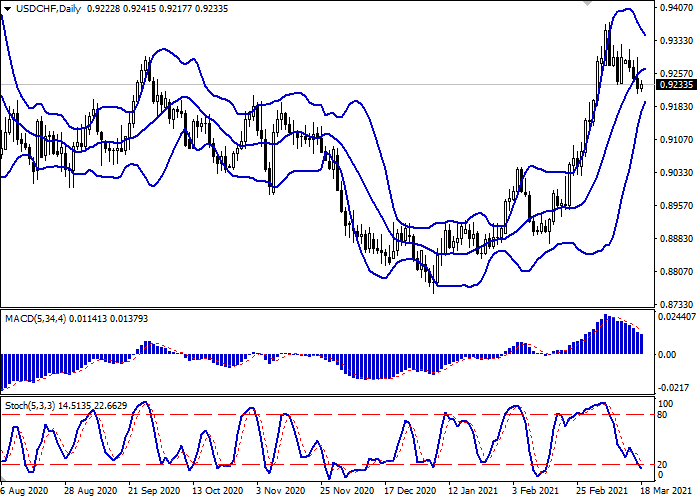Morning Market Review
EUR/USD
Today, during the Asian session, the EUR/USD pair is growing as part of the correction, recovering after a confident "bearish" rally, which led to the renewal of local minimums of November 24, 2020. The current growth of EUR is caused only by technical factors, while the fundamental picture on the market changes insignificantly. Monday’s macroeconomic data from Germany put additional pressure on the instrument. Industrial production fell by 2.5% MoM for January after rising by 1.9% MoM for the previous month. Analysts had expected the index to rise by 0.2% MoM. Also, it declined by 3.9% YoY after rising by 1.0% YoY for the previous period. The markets were slightly supported only by the indicator of investor confidence for March from Sentix, which rose from –0.2 to 5 points against the forecast of +1.9 points. On Tuesday, European investors are focusing on the renewed data on the dynamics of GDP in the euro area for the fourth quarter of 2020.
GBP/USD
Today during the Asian session, the GBP/USD pair is growing slightly, developing the “bullish” signal formed yesterday. Now the activity of buyers in the market has not changed the balance of power for the instrument, even in the short term but new drivers are expected soon. USD is in demand after the publication of a strong report on the US labor market, as well as in anticipation of the approval of a program to support the national economy of $1.9 trillion. The bill passed a vote in the Senate, having undergone several amendments. Now it will be returned to the House of Representatives, after which he will go for approval of US President Joe Biden, who hopes to complete the process this week. In turn, on Tuesday, GBP was supported by statistics on the dynamics of retail sales from the Confederation of British Industrialists. In February, the indicator accelerated from +7.1% YoY to +9.5% YoY, beating the forecasts of +7.0% YoY.
NZD/USD
Today, during the Asian session, the NZD/USD pair is declining, developing a “bearish” trend in the short term and trading near local lows since mid-January 2021. The demand for commodity assets remains moderate, especially against the backdrop of positive macroeconomic signals from the US economy and the readiness of congressmen to approve a new package of large-scale support measures. The New Zealand dollar reacted positively to the data block from China on the dynamics of imports and exports, which indicates a further recovery in trade activity around the world. However, last week, the PRC set a GDP growth target at +6%, which was worse than market expectations of +8%. Macroeconomic statistics from New Zealand put additional pressure on the instrument on Tuesday. There, the volume of sales in the industrial sector for the fourth quarter of 2020 slowed down from +17.3% QoQ to +0.5% QoQ. The index of business optimism from the RBNZ for March fell sharply from 7 to 0 points.
USD/JPY
Today during the Asian session, the USD/JPY pair is steadily growing, developing a powerful “bullish” rally since February 23 and renewing record highs since June 2020. USD is in strong demand against the backdrop of positive macroeconomic publications from the United States, as well as anticipating a new impetus for the recovery of the American economy after the approval of the stimulus bill of $1.9 trillion. JPY, in turn, is retreating after the release of statistics from Japan. Thus, the revised data reflected a slowdown in GDP for the fourth quarter of 2020 from +3% QoQ to +2.8% QoQ. In annual terms, the growth rate of the Japanese economy was revised from +12.7% YoY to +11.7% YoY.
XAU/USD
Today, during the Asian session, gold prices are rising within a correction, recovering from another decline yesterday, which led to the renewal of record lows since June 2020. The reason for the next sales at the beginning of the week was the strong position of the US currency and the yield on American securities, which remains quite high and attractive. Gold is supported only by expectations of the final approval of a new package of measures to support the US economy of $1.9 trillion, which is expected to lead to a jump in inflationary pressures within the country
Resistance levels: 1.2066, 1.2127.
Support levels: 1.1906, 1.1780.







